Conditions We treat
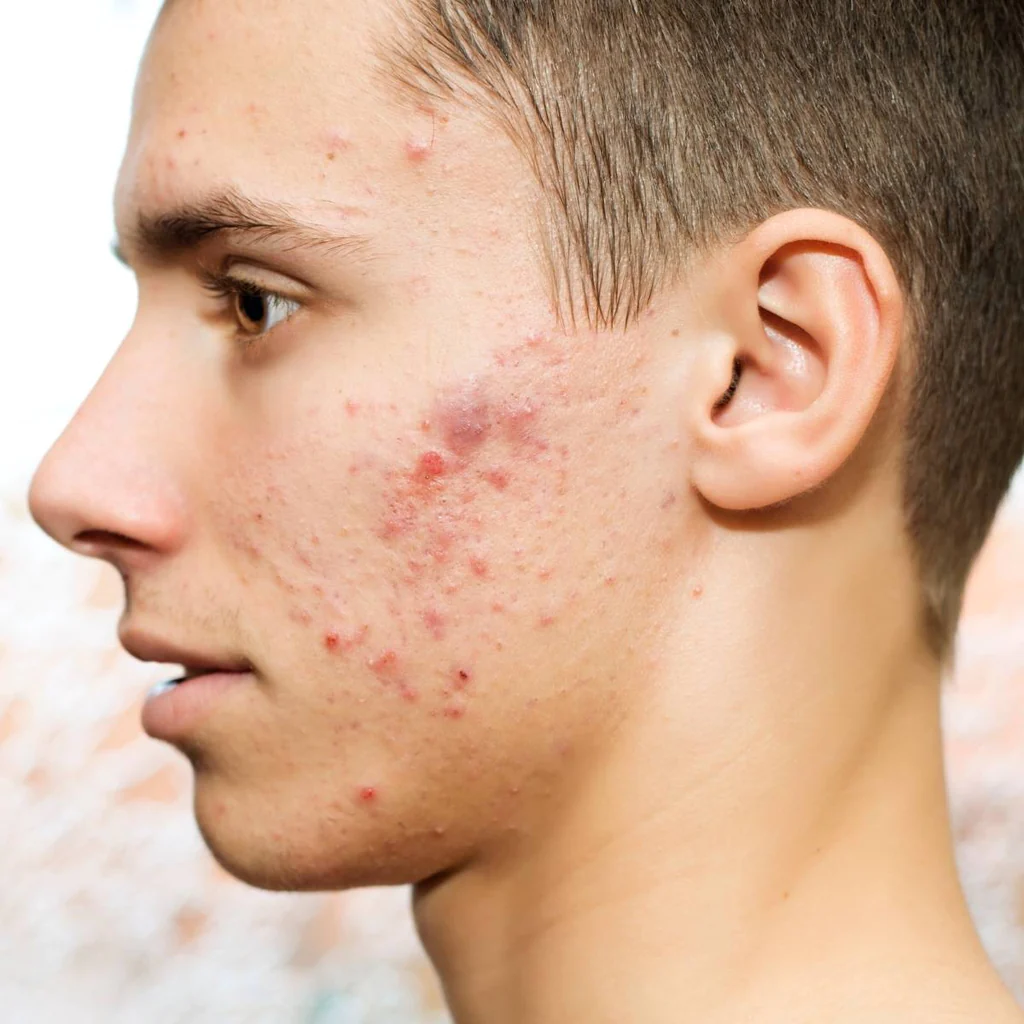 Acne is a skin condition where oil and dead skin cells clog hair follicles, leading to pimples, blackheads, and whiteheads. It commonly appears on the face, chest, and back. Factors like hormones, diet, stress, and genetics can influence its occurrence.
Acne is a skin condition where oil and dead skin cells clog hair follicles, leading to pimples, blackheads, and whiteheads. It commonly appears on the face, chest, and back. Factors like hormones, diet, stress, and genetics can influence its occurrence.
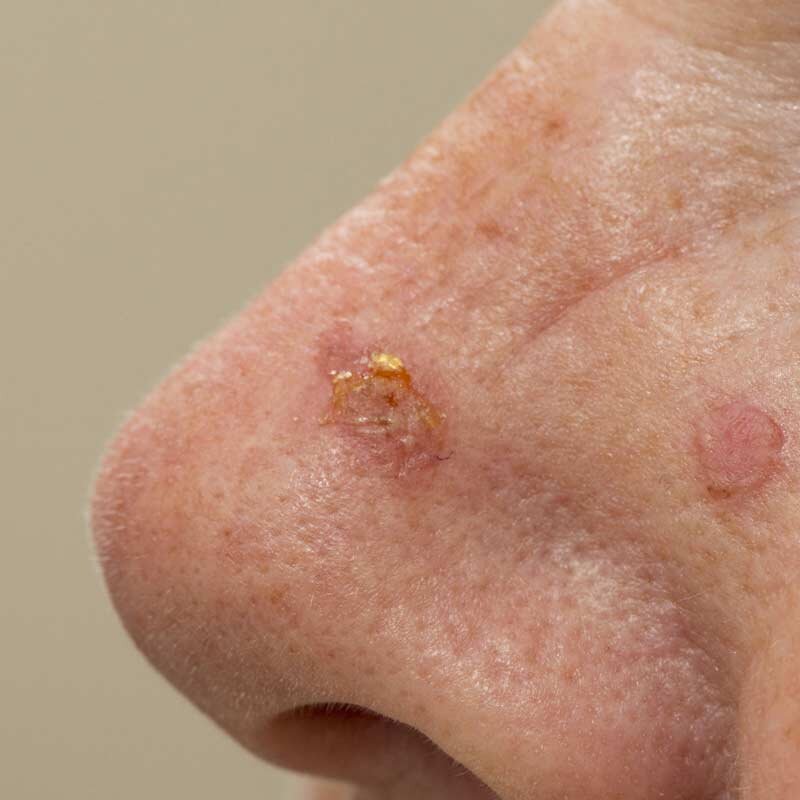 Actinic keratosis is a rough, scaly patch on the skin caused by prolonged exposure to the sun. It is considered precancerous and can evolve into skin cancer. Early treatment can help prevent progression.
Actinic keratosis is a rough, scaly patch on the skin caused by prolonged exposure to the sun. It is considered precancerous and can evolve into skin cancer. Early treatment can help prevent progression.
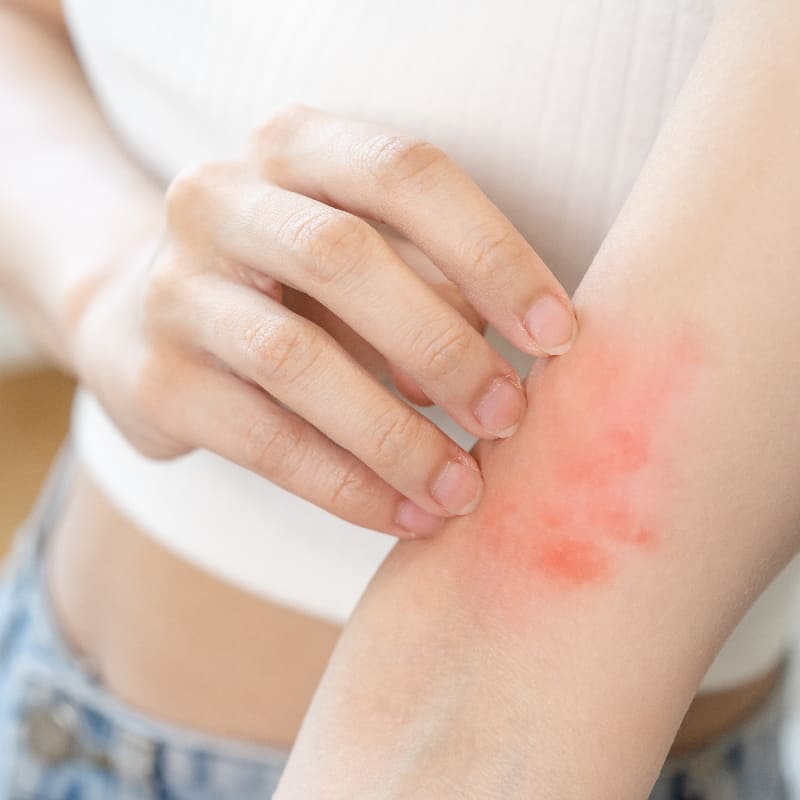 Allergic dermatitis is an itchy rash that arises when the skin comes into direct contact with an allergen. Common triggers include certain plants, metals, soaps, and cosmetics. It's vital to identify and avoid the causative agent.
Allergic dermatitis is an itchy rash that arises when the skin comes into direct contact with an allergen. Common triggers include certain plants, metals, soaps, and cosmetics. It's vital to identify and avoid the causative agent.
 Alopecia refers to hair loss from the scalp or body. It can be due to various reasons, including genetics, hormonal changes, medical conditions, or medications. The pattern and rate of hair loss can vary.
Alopecia refers to hair loss from the scalp or body. It can be due to various reasons, including genetics, hormonal changes, medical conditions, or medications. The pattern and rate of hair loss can vary.
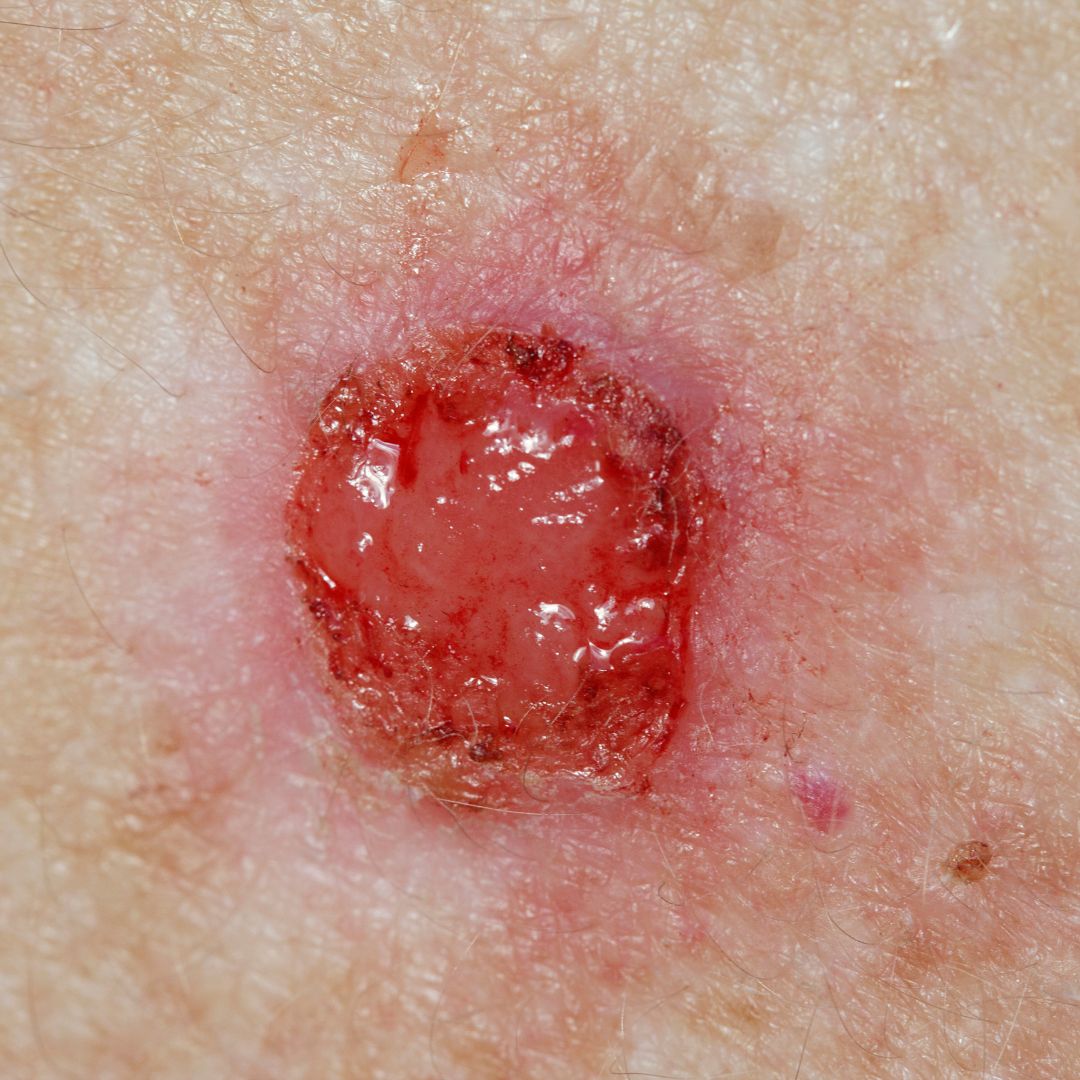 Basal cell cancer is a type of skin cancer that arises from the skin's basal cells. It usually appears as a red or pink growth. While it's the most common skin cancer, it's also the least aggressive.
Basal cell cancer is a type of skin cancer that arises from the skin's basal cells. It usually appears as a red or pink growth. While it's the most common skin cancer, it's also the least aggressive.
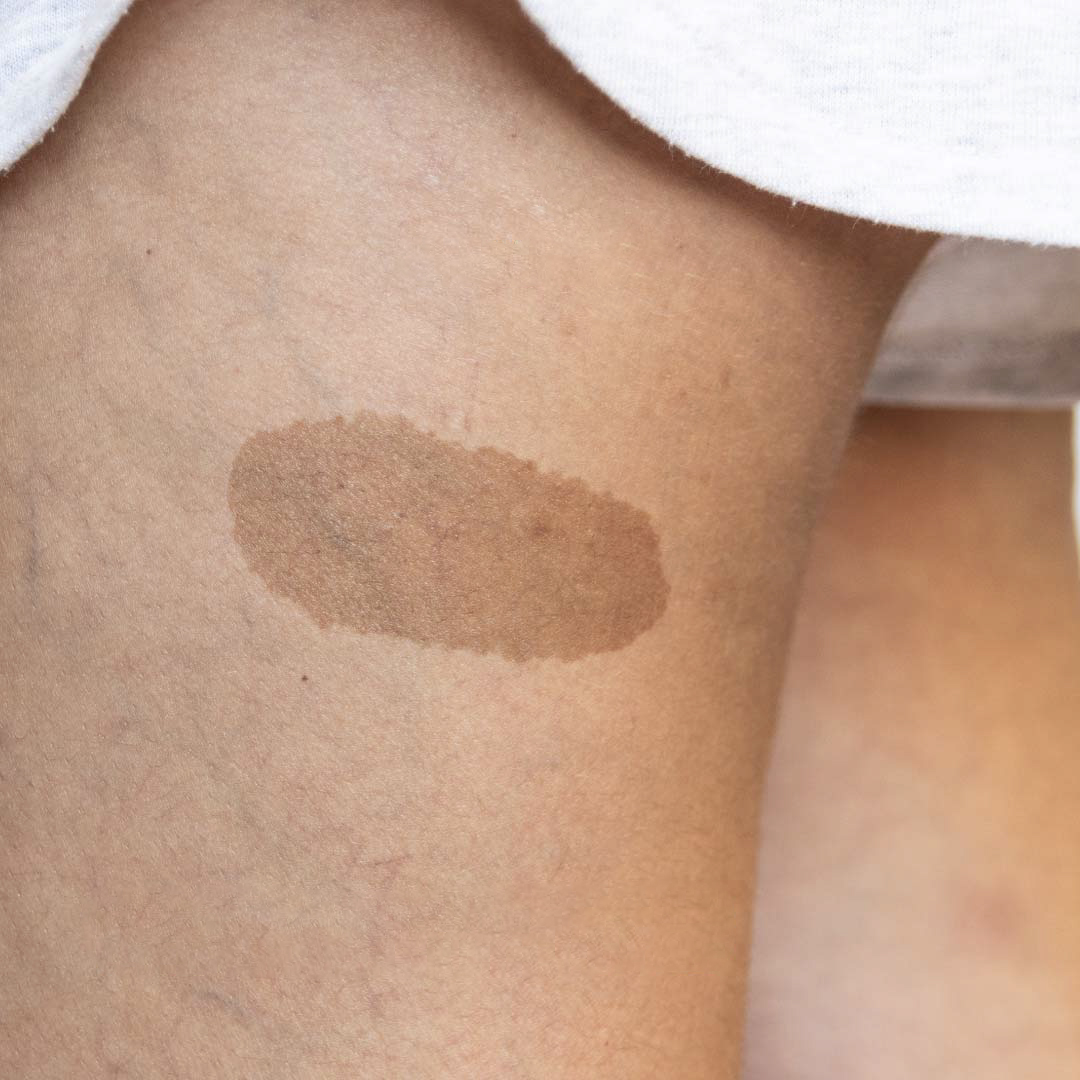 Birthmarks are colored marks that appear on the skin at birth or shortly after. They can be flat or raised and can vary in color and size. Most birthmarks are harmless and require no treatment.
Birthmarks are colored marks that appear on the skin at birth or shortly after. They can be flat or raised and can vary in color and size. Most birthmarks are harmless and require no treatment.
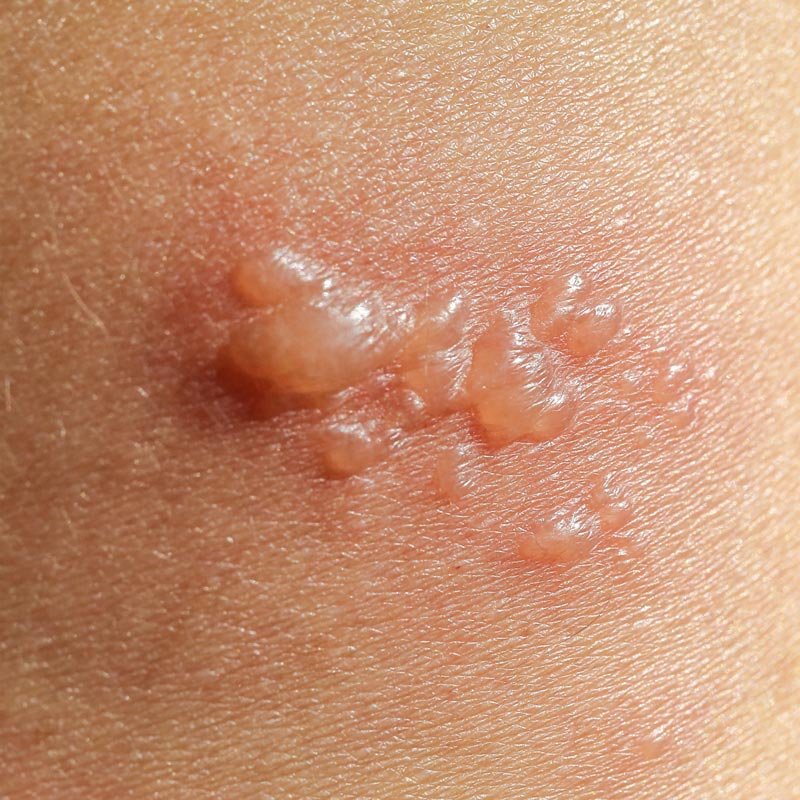 Blistering conditions involve the formation of fluid-filled sacs on the skin's surface. Causes include burns, infections, or other skin disorders. Proper care is essential to prevent infection.
Blistering conditions involve the formation of fluid-filled sacs on the skin's surface. Causes include burns, infections, or other skin disorders. Proper care is essential to prevent infection.
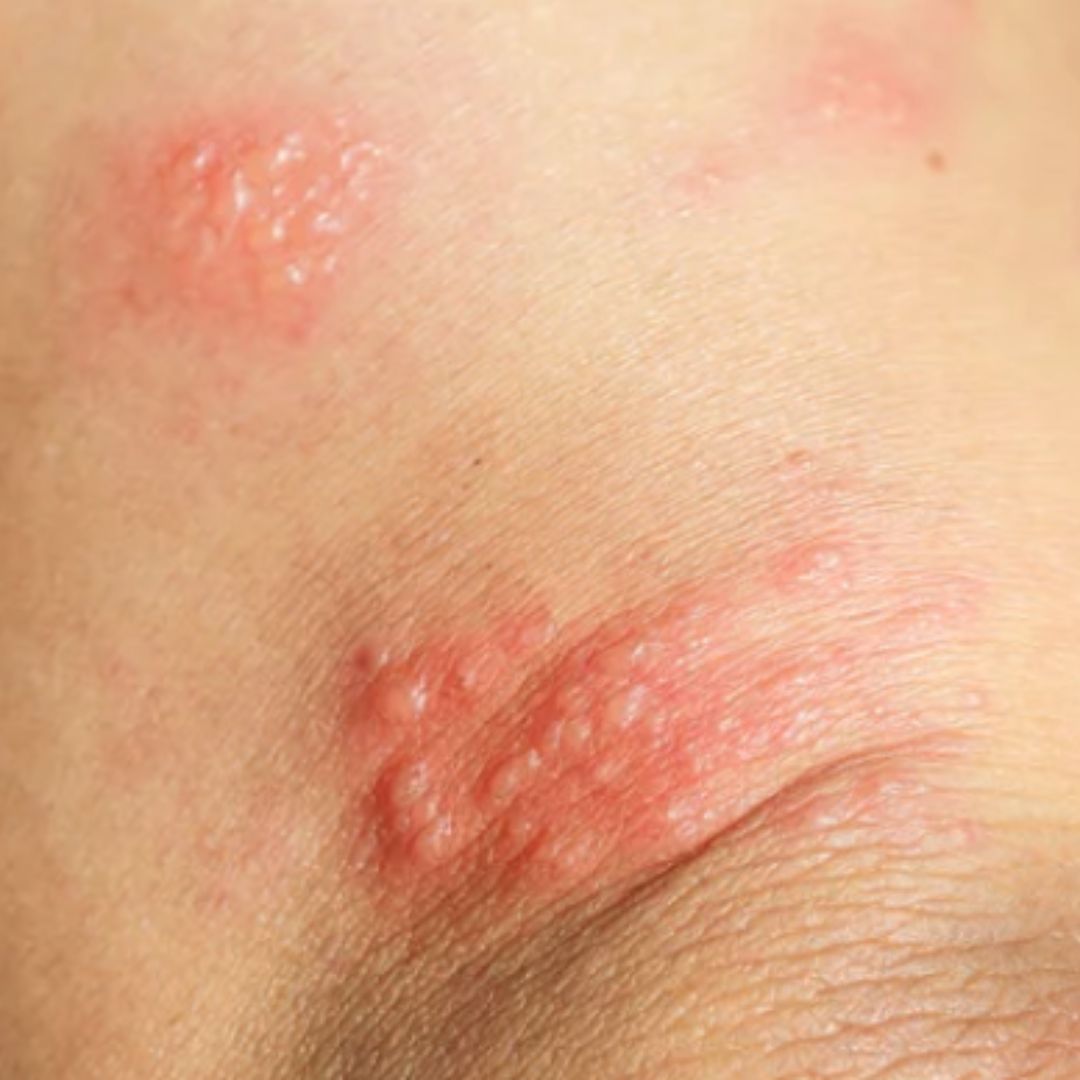 Bullous pemphigoid is a rare skin disorder causing large, fluid-filled blisters. These blisters commonly form on areas like the abdomen, arms, or legs. The exact cause is unknown, but treatment can manage symptoms.
Bullous pemphigoid is a rare skin disorder causing large, fluid-filled blisters. These blisters commonly form on areas like the abdomen, arms, or legs. The exact cause is unknown, but treatment can manage symptoms.
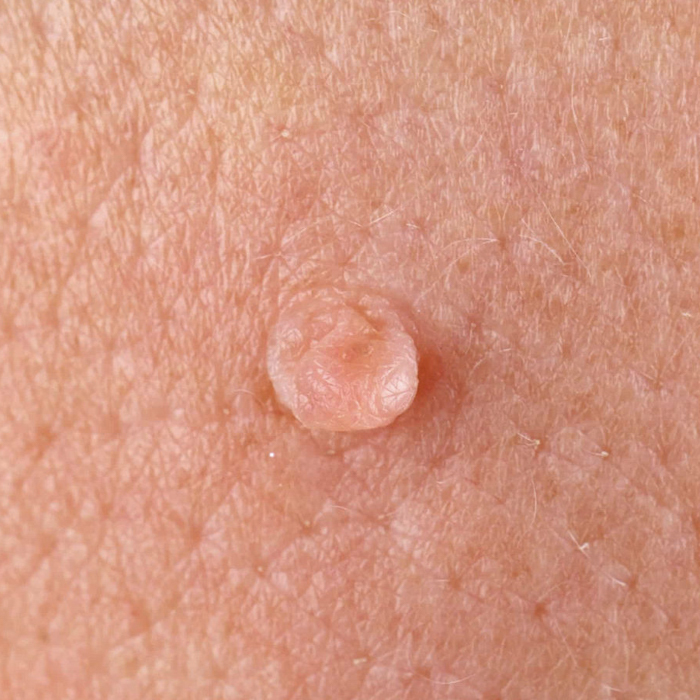 Condyloma refers to genital warts caused by the human papillomavirus (HPV). They can appear on the genitals, anus, or mouth. Vaccination and safe practices can prevent this condition.
Condyloma refers to genital warts caused by the human papillomavirus (HPV). They can appear on the genitals, anus, or mouth. Vaccination and safe practices can prevent this condition.
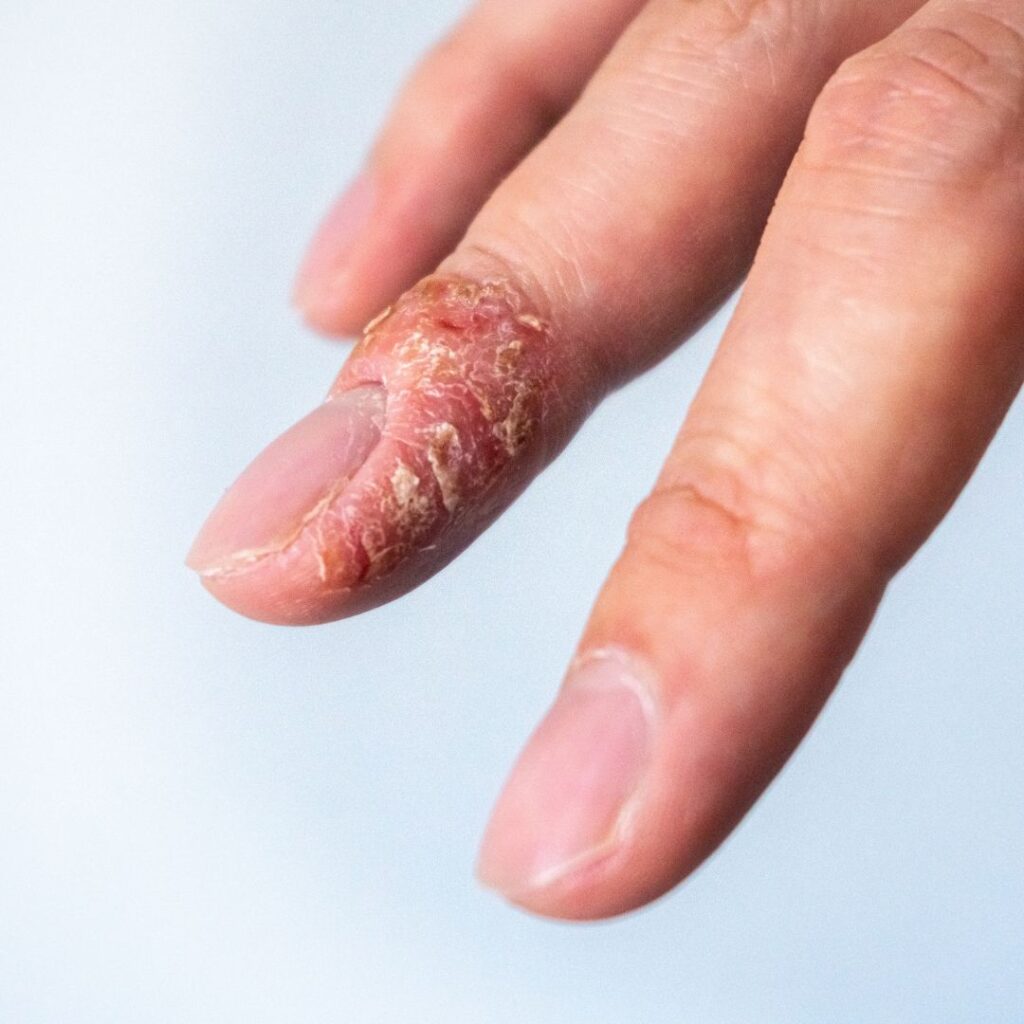 Contact dermatitis is a red, itchy rash caused by direct contact with a substance. It can be either irritant or allergic in nature. Identifying and avoiding the offending agent is key.
Contact dermatitis is a red, itchy rash caused by direct contact with a substance. It can be either irritant or allergic in nature. Identifying and avoiding the offending agent is key.
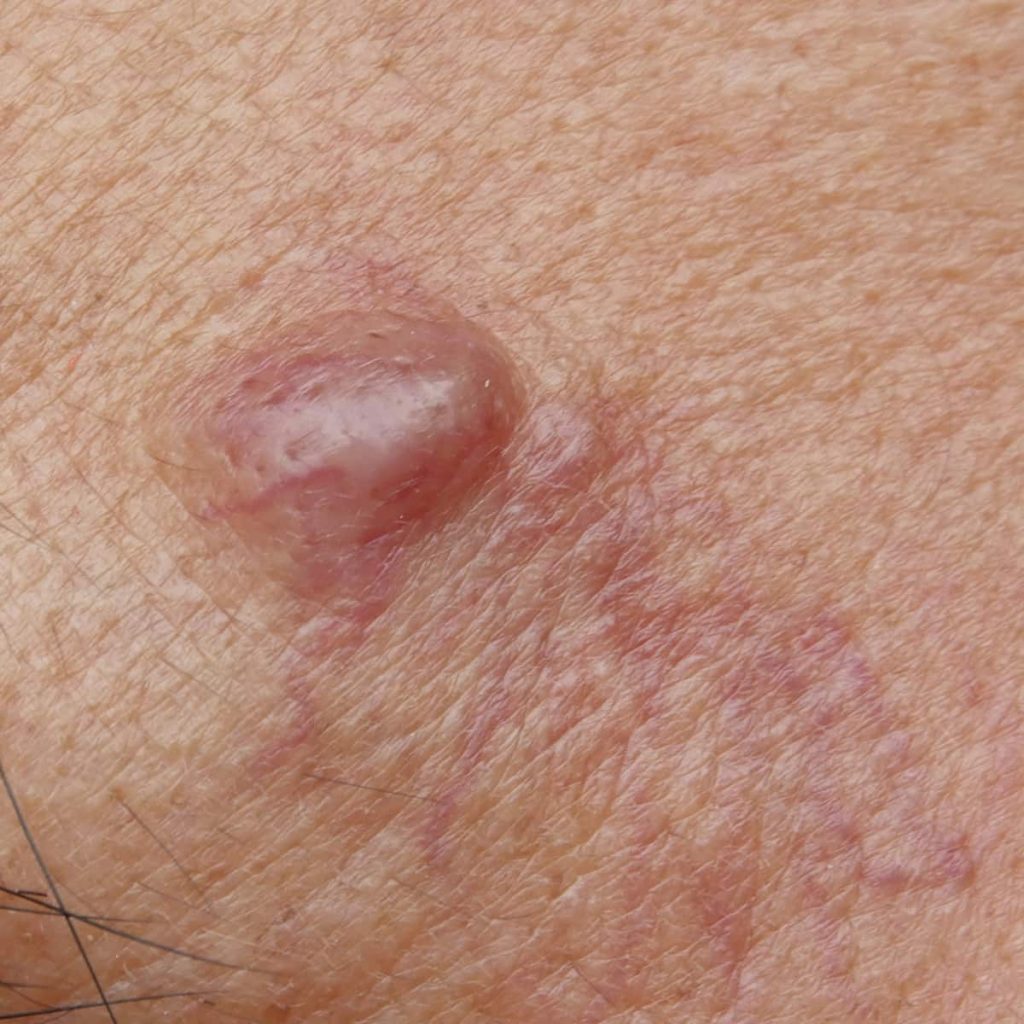 Cysts are closed sac-like structures filled with fluid or semi-solid material. They can appear anywhere on the body. Most cysts are benign, but some may need removal or observation.
Cysts are closed sac-like structures filled with fluid or semi-solid material. They can appear anywhere on the body. Most cysts are benign, but some may need removal or observation.
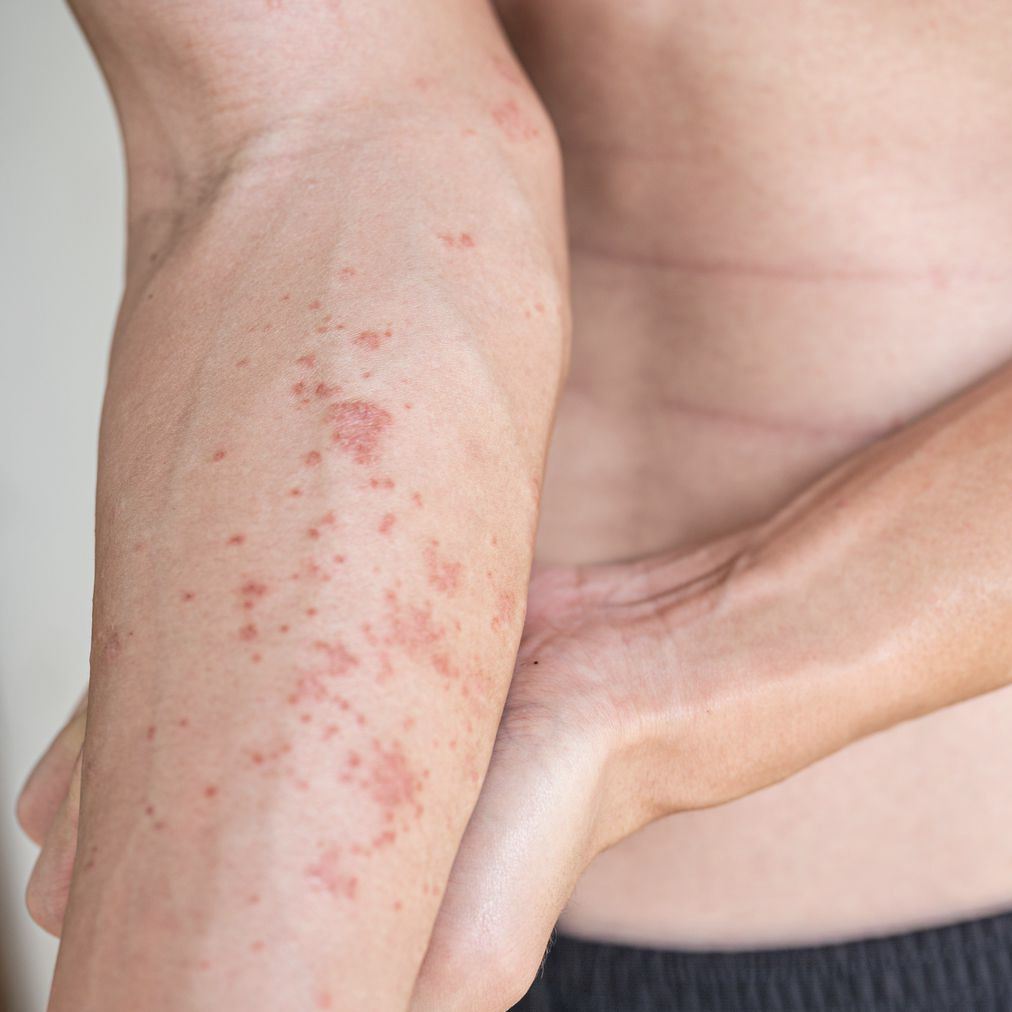 Dermatitis refers to skin inflammation. It can be caused by various factors, leading to itching, redness, and swelling. Moisturizers and avoiding irritants can help manage the condition.
Dermatitis refers to skin inflammation. It can be caused by various factors, leading to itching, redness, and swelling. Moisturizers and avoiding irritants can help manage the condition.
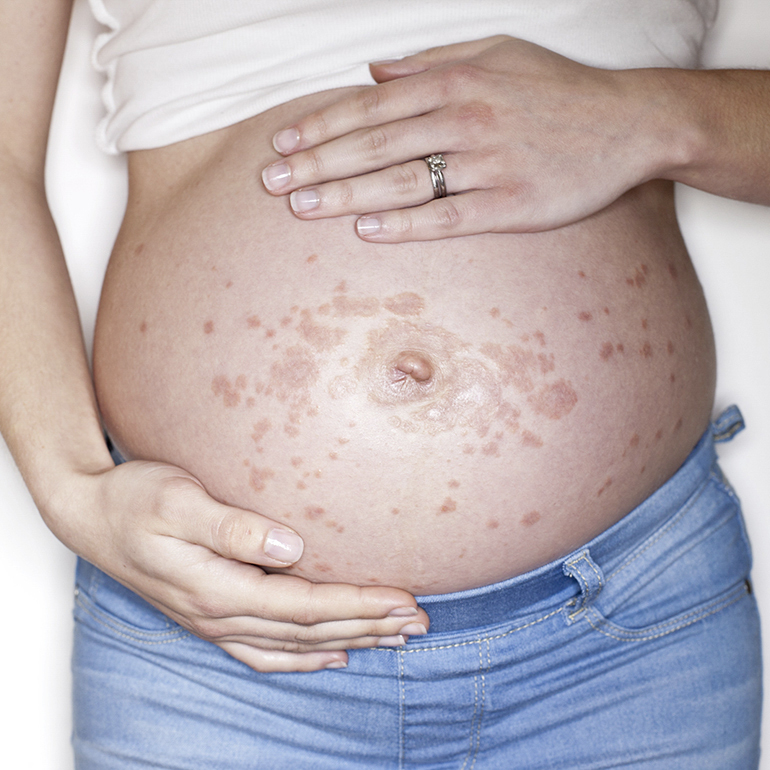 Dermatology of pregnancy includes skin changes or conditions that appear during pregnancy. This can include stretch marks, pigmentation changes, or specific rashes. Most resolve after giving birth.
Dermatology of pregnancy includes skin changes or conditions that appear during pregnancy. This can include stretch marks, pigmentation changes, or specific rashes. Most resolve after giving birth.
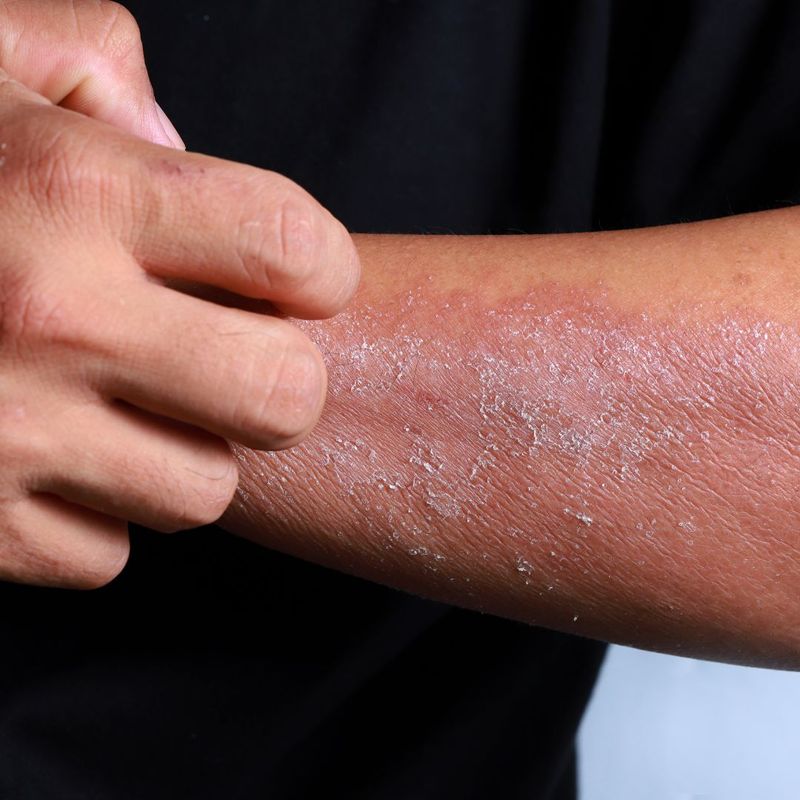 Eczema is a chronic skin condition causing itchy, inflamed patches. The skin may become red, dry, and scaly. Keeping the skin moisturized and avoiding triggers can help manage eczema.
Eczema is a chronic skin condition causing itchy, inflamed patches. The skin may become red, dry, and scaly. Keeping the skin moisturized and avoiding triggers can help manage eczema.
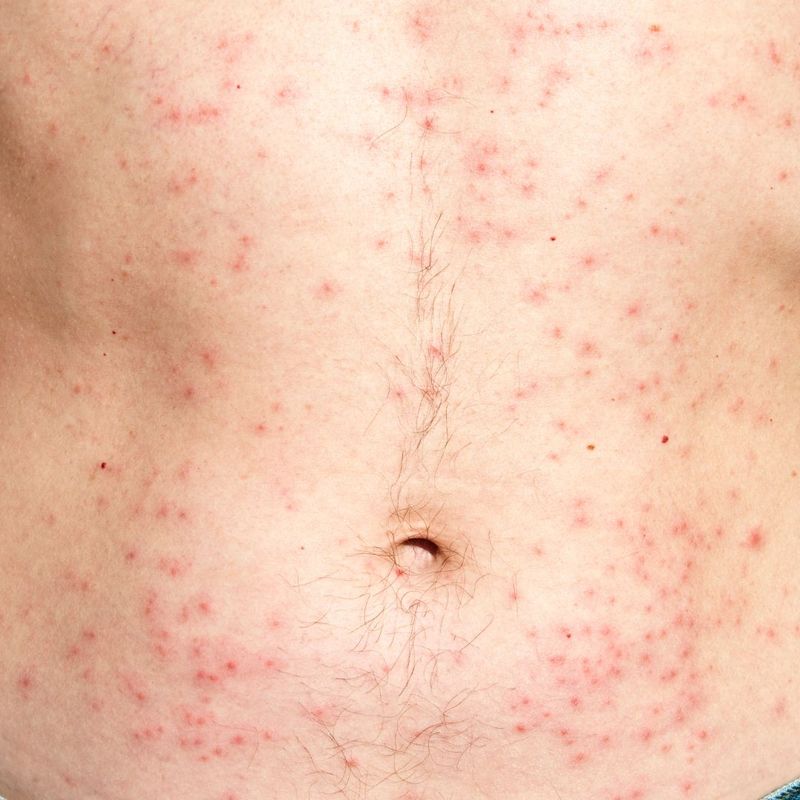 Folliculitis is the inflammation of hair follicles, often due to infection. It results in small, red bumps or pustules. Good hygiene practices can reduce its occurrence.
Folliculitis is the inflammation of hair follicles, often due to infection. It results in small, red bumps or pustules. Good hygiene practices can reduce its occurrence.
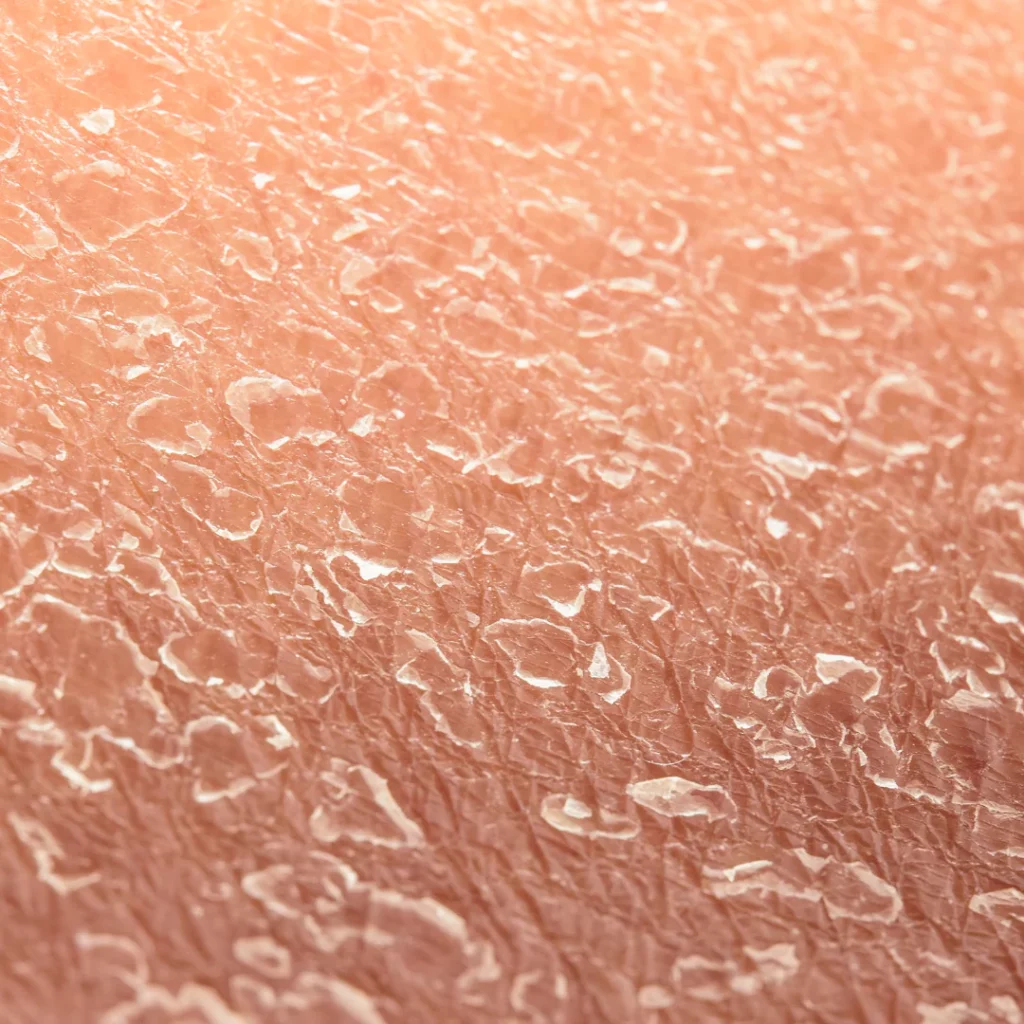 Itching, or pruritus, is an uncomfortable sensation leading to the desire to scratch. It can result from various conditions, from dry skin to systemic diseases. Identifying the cause is essential for proper treatment.
Itching, or pruritus, is an uncomfortable sensation leading to the desire to scratch. It can result from various conditions, from dry skin to systemic diseases. Identifying the cause is essential for proper treatment.
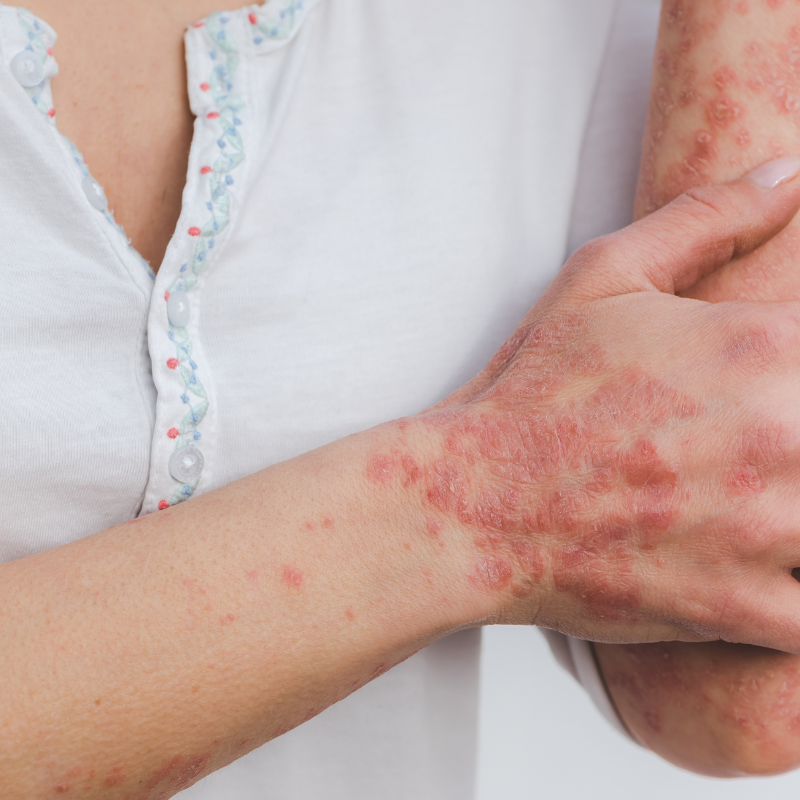 Lichen planus is an inflammatory skin condition causing purple, itchy, flat bumps. It can also affect the mouth, nails, or scalp. The exact cause is unknown, but it's believed to be related to the immune system.
Lichen planus is an inflammatory skin condition causing purple, itchy, flat bumps. It can also affect the mouth, nails, or scalp. The exact cause is unknown, but it's believed to be related to the immune system.
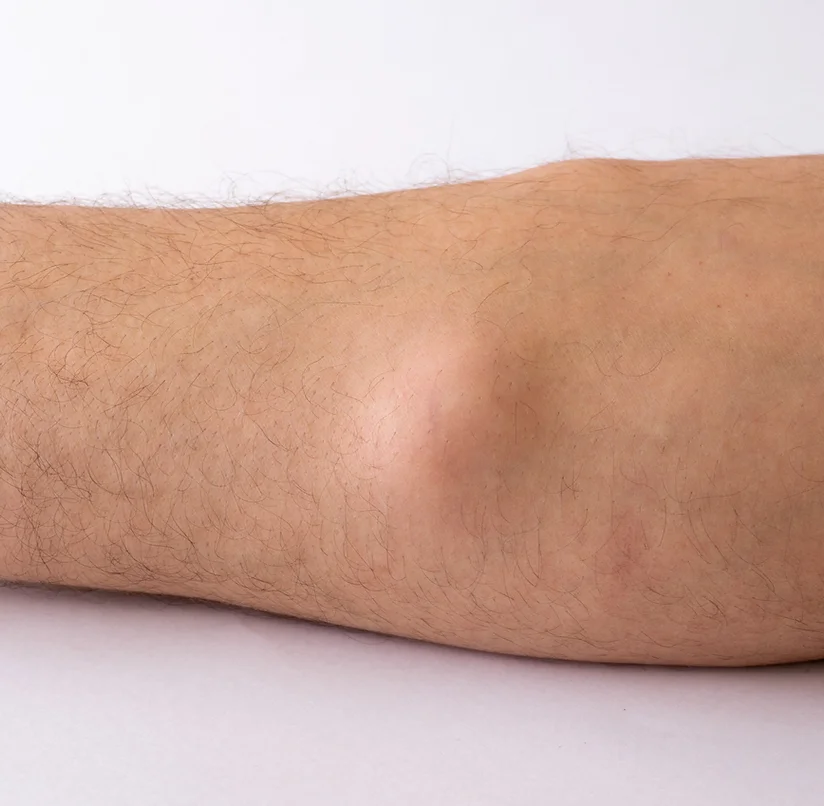 Lipomas are benign fatty tumors that form just beneath the skin. They are soft, movable, and generally painless. They are harmless but can be removed if bothersome.
Lipomas are benign fatty tumors that form just beneath the skin. They are soft, movable, and generally painless. They are harmless but can be removed if bothersome.
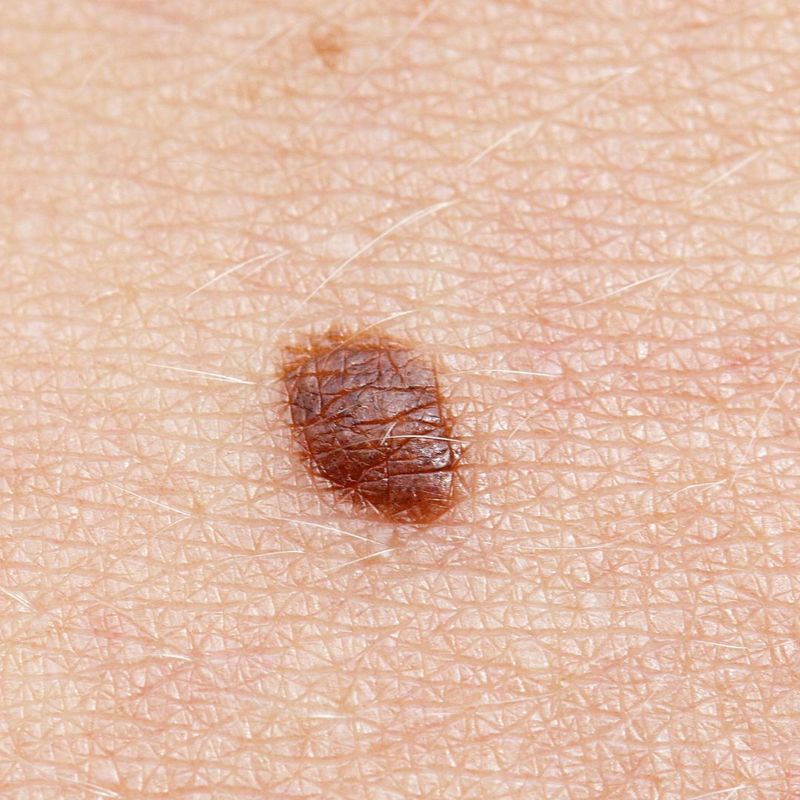 Melanoma is a dangerous type of skin cancer arising from pigment-producing cells. Early detection and treatment are crucial, as it can spread to other parts of the body.
Melanoma is a dangerous type of skin cancer arising from pigment-producing cells. Early detection and treatment are crucial, as it can spread to other parts of the body.
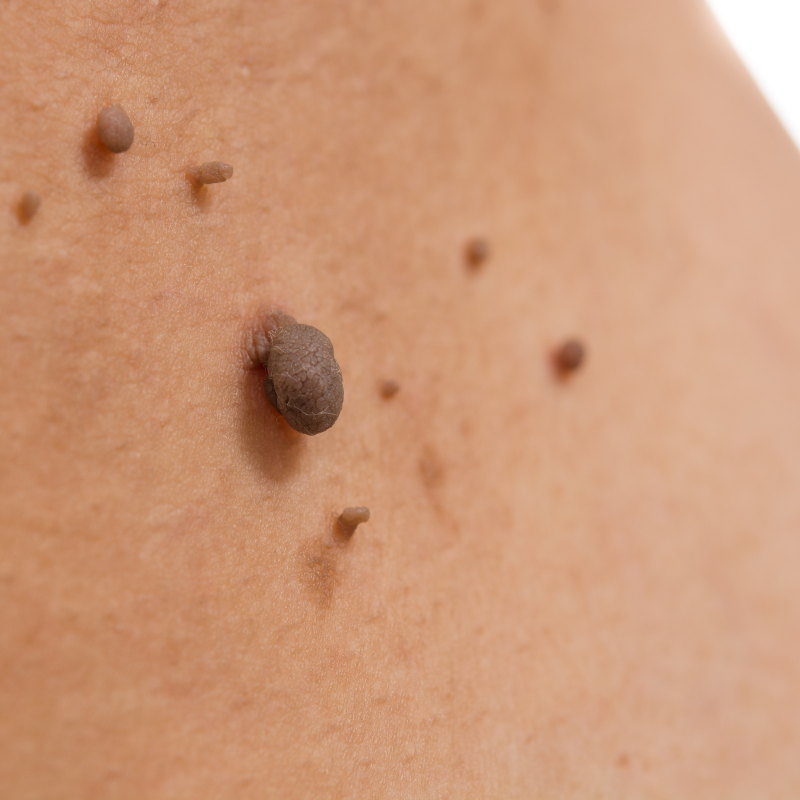 Moles are common skin growths resulting from clusters of pigmented cells. They can vary in color, shape, and size. Regular checks are advised to monitor for changes that could indicate cancer.
Moles are common skin growths resulting from clusters of pigmented cells. They can vary in color, shape, and size. Regular checks are advised to monitor for changes that could indicate cancer.
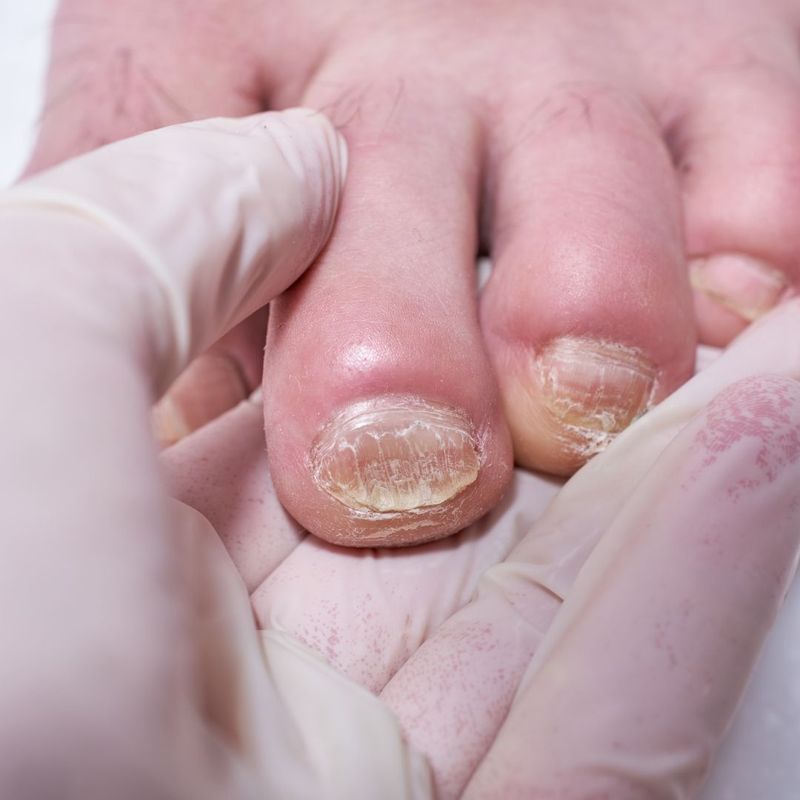 Nail disorders include any abnormality or condition affecting the nails. This can range from fungal infections to discoloration or structural issues. Proper nail care and hygiene can prevent many disorders.
Nail disorders include any abnormality or condition affecting the nails. This can range from fungal infections to discoloration or structural issues. Proper nail care and hygiene can prevent many disorders.
 Nevi is another term for moles. They are common skin growths that can appear anywhere on the body. Monitoring for any changes in size, shape, or color is essential.
Nevi is another term for moles. They are common skin growths that can appear anywhere on the body. Monitoring for any changes in size, shape, or color is essential.
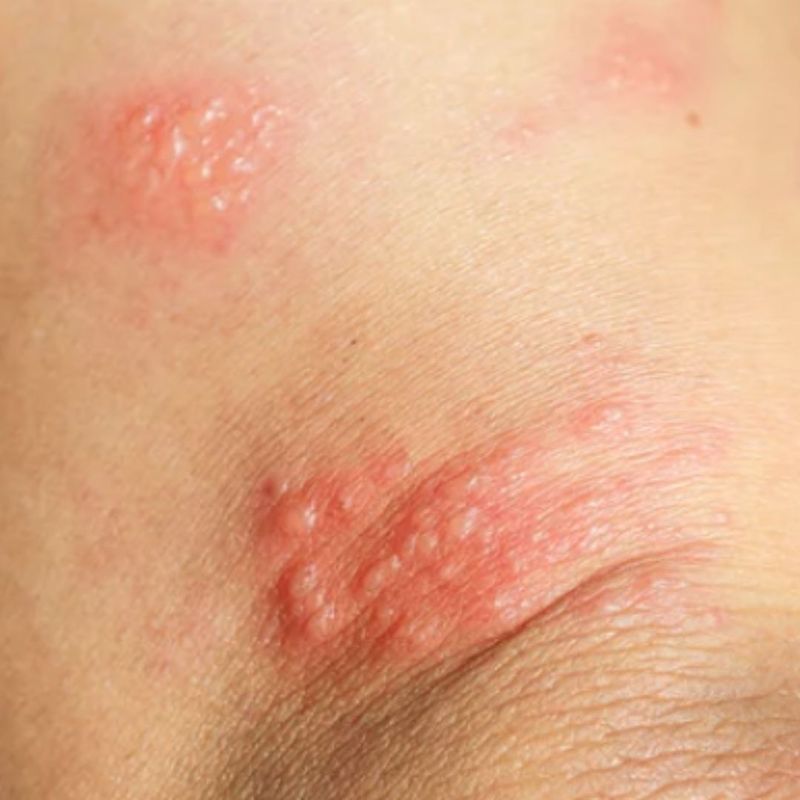 Pemphigus is a rare autoimmune disorder where blisters form on the skin and mucous membranes. It can be severe and requires medical treatment. The exact cause is unknown.
Pemphigus is a rare autoimmune disorder where blisters form on the skin and mucous membranes. It can be severe and requires medical treatment. The exact cause is unknown.
 Porphyria refers to a group of disorders affecting the production of heme, leading to skin or nervous system issues. Symptoms can vary greatly. Avoiding triggers and managing symptoms are key.
Porphyria refers to a group of disorders affecting the production of heme, leading to skin or nervous system issues. Symptoms can vary greatly. Avoiding triggers and managing symptoms are key.
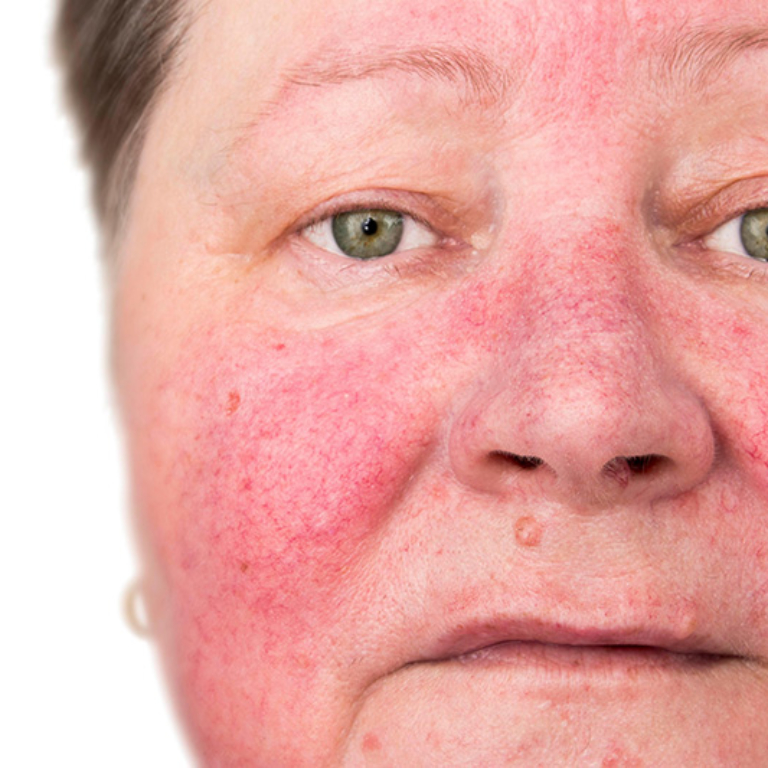 Rosacea is a chronic skin condition causing redness and visible blood vessels on the face. It can also produce small, red, pus-filled bumps. Treatment can help control and reduce symptoms.
Rosacea is a chronic skin condition causing redness and visible blood vessels on the face. It can also produce small, red, pus-filled bumps. Treatment can help control and reduce symptoms.
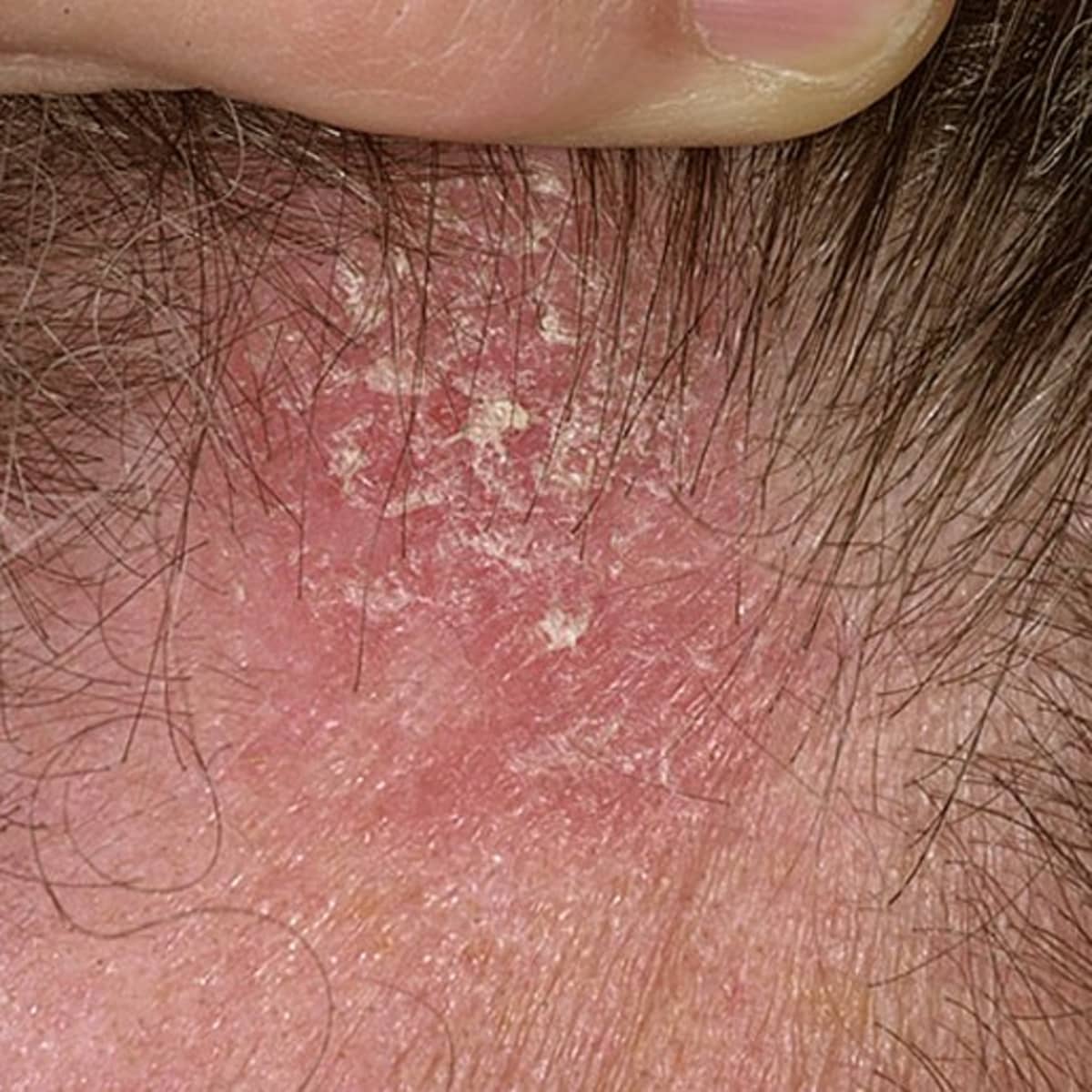 Seborrheic dermatitis is a skin condition causing flaky, scaly patches, often on the scalp. It's linked to the overproduction of oil and a yeast. Managing the condition involves proper skin care and sometimes medicated treatments.
Seborrheic dermatitis is a skin condition causing flaky, scaly patches, often on the scalp. It's linked to the overproduction of oil and a yeast. Managing the condition involves proper skin care and sometimes medicated treatments.
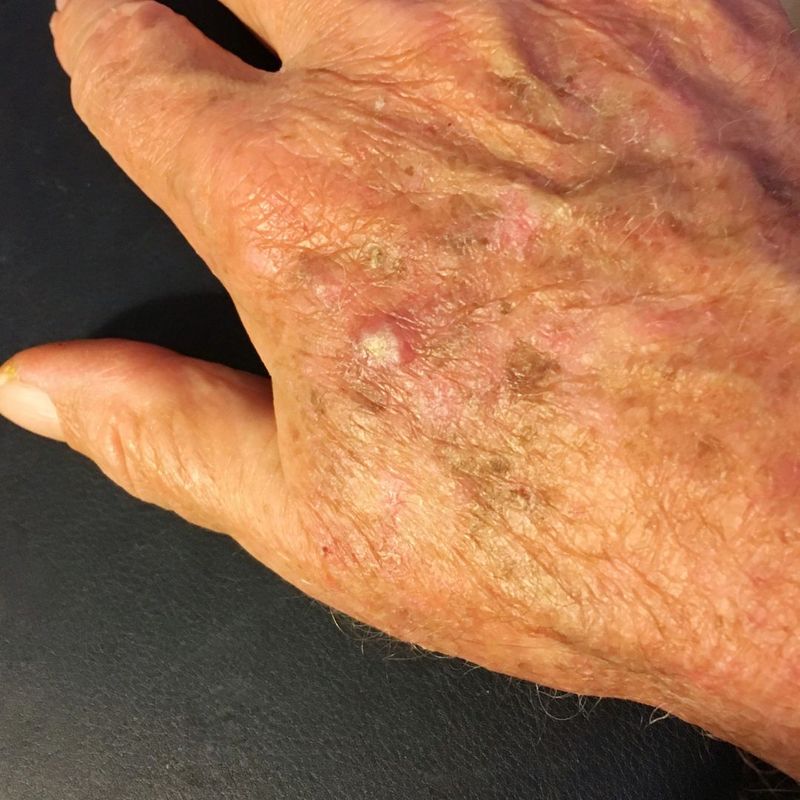 Seborrheic keratosis is a benign skin growth that looks like a wart or mole. They are often brown or black and have a waxy texture. They are harmless and require no treatment unless bothersome.
Seborrheic keratosis is a benign skin growth that looks like a wart or mole. They are often brown or black and have a waxy texture. They are harmless and require no treatment unless bothersome.
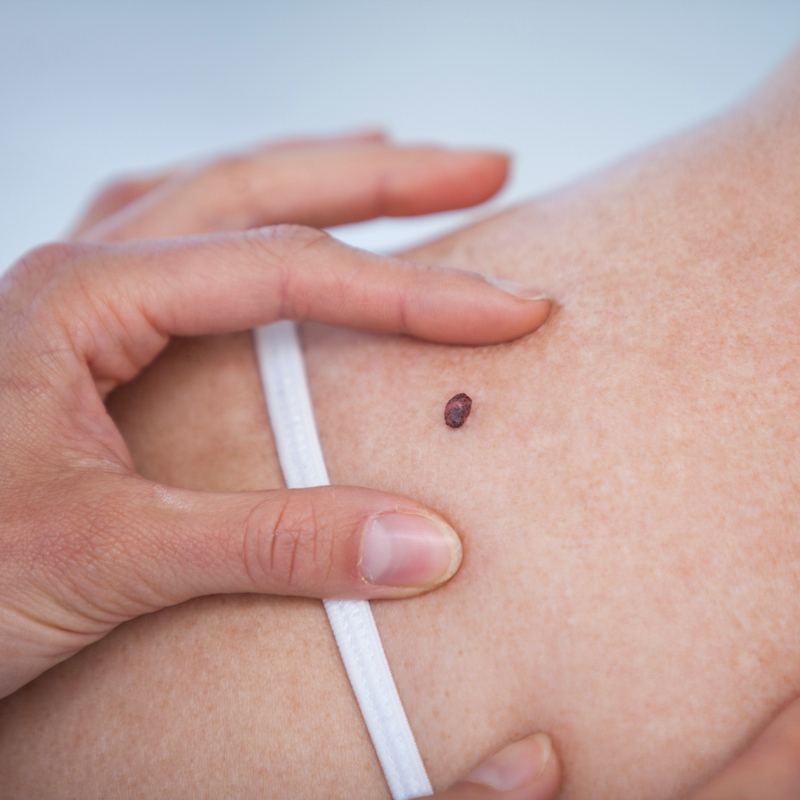 Skin cancer refers to the abnormal growth of skin cells. It's mainly caused by prolonged exposure to the sun. Early detection and protection against UV radiation are essential.
Skin cancer refers to the abnormal growth of skin cells. It's mainly caused by prolonged exposure to the sun. Early detection and protection against UV radiation are essential.
 Squamous cell cancer is a common skin cancer arising from the outer layer of the skin. It often appears as a firm, red nodule or a flat lesion. Protection from the sun and early detection are crucial.
Squamous cell cancer is a common skin cancer arising from the outer layer of the skin. It often appears as a firm, red nodule or a flat lesion. Protection from the sun and early detection are crucial.
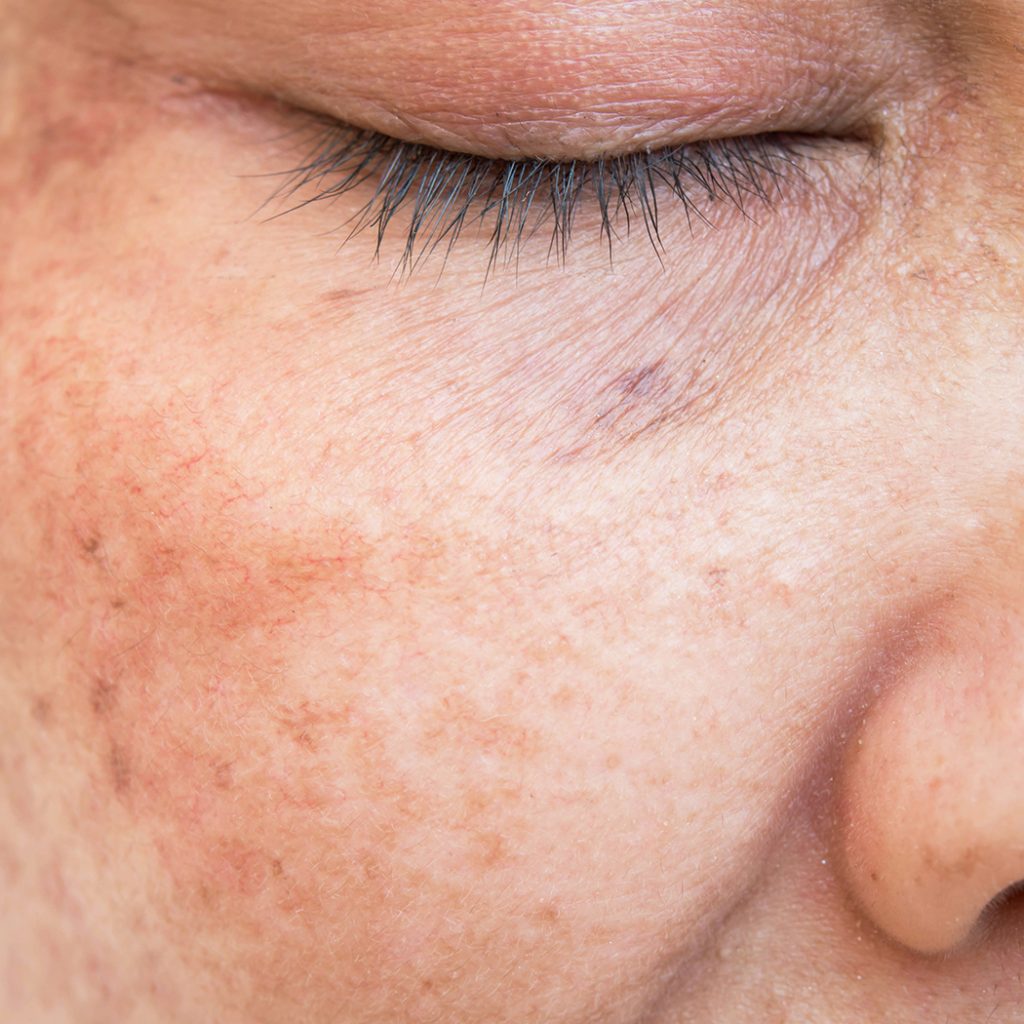 Sun damage refers to skin changes caused by prolonged UV exposure. This can lead to premature aging, discoloration, and an increased risk of skin cancer. Using sunscreen and avoiding peak sun hours can help prevent damage.
Sun damage refers to skin changes caused by prolonged UV exposure. This can lead to premature aging, discoloration, and an increased risk of skin cancer. Using sunscreen and avoiding peak sun hours can help prevent damage.
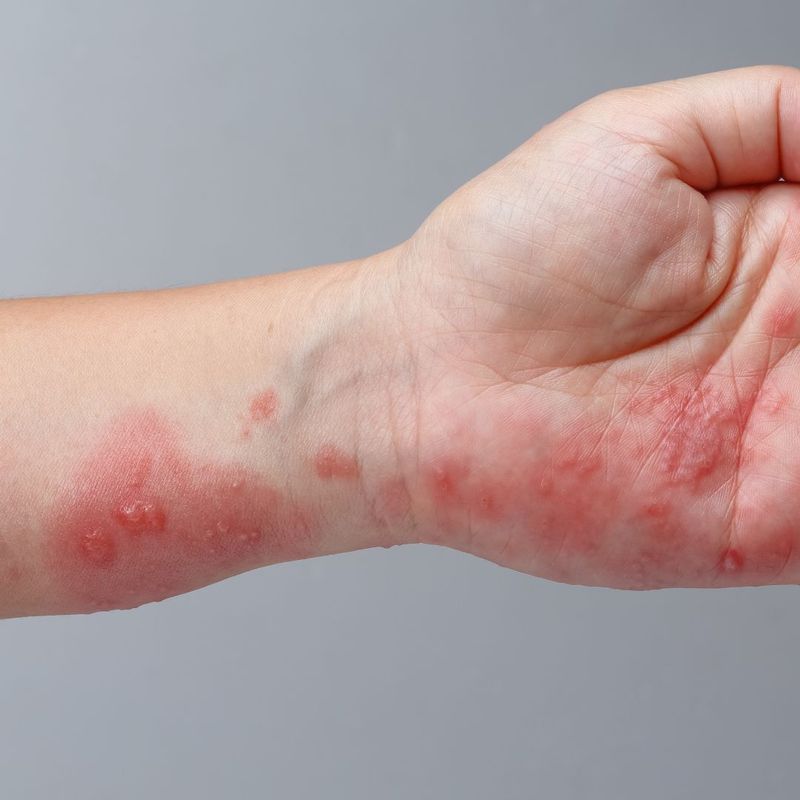 Urticaria, commonly known as hives, are red, itchy welts on the skin. They can result from allergies, stress, or other triggers.
Urticaria, commonly known as hives, are red, itchy welts on the skin. They can result from allergies, stress, or other triggers.
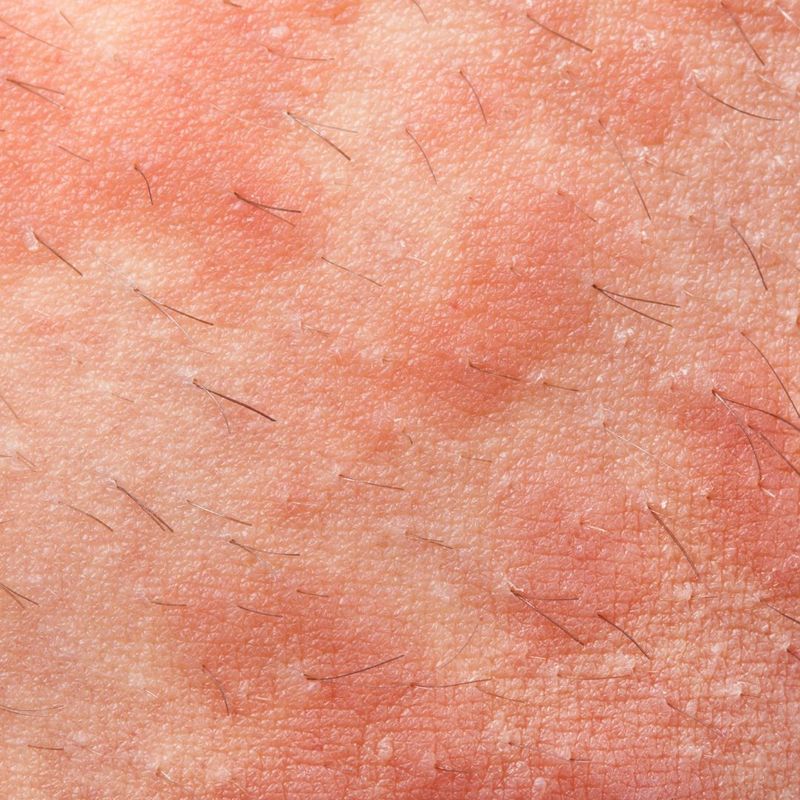 Vasculitis refers to inflammation of blood vessels. It can affect various organs and tissues in the body. Symptoms vary based on the vessels involved and can include rashes, fatigue, and joint pain. Early diagnosis and treatment are vital to prevent complications.
Vasculitis refers to inflammation of blood vessels. It can affect various organs and tissues in the body. Symptoms vary based on the vessels involved and can include rashes, fatigue, and joint pain. Early diagnosis and treatment are vital to prevent complications.
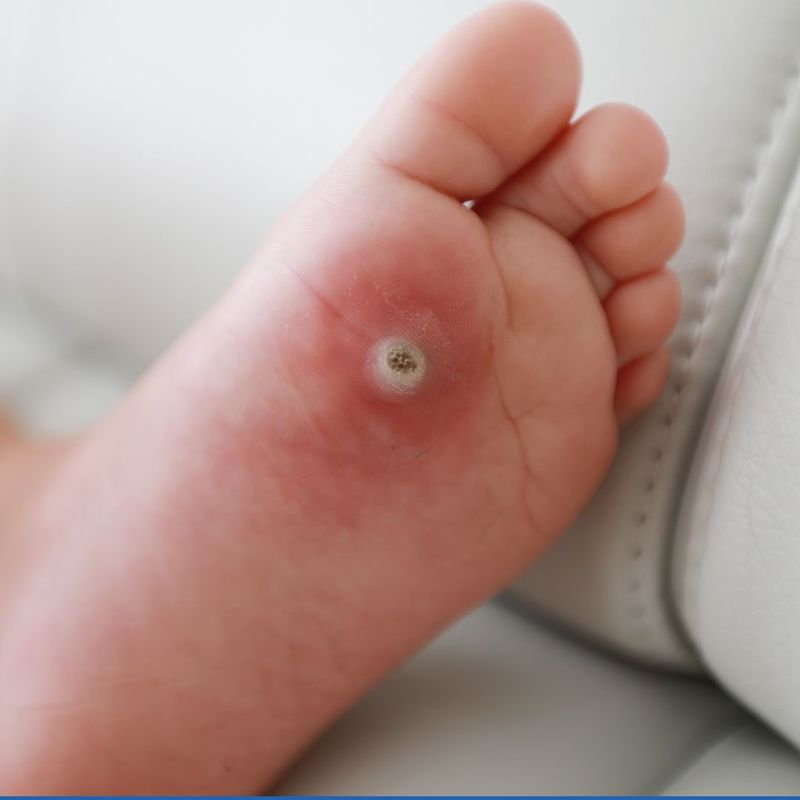 Warts are small, rough skin growths caused by the human papillomavirus (HPV). They can appear anywhere on the body but are common on hands and feet. Many warts resolve on their own, but treatments can speed up their removal.
Warts are small, rough skin growths caused by the human papillomavirus (HPV). They can appear anywhere on the body but are common on hands and feet. Many warts resolve on their own, but treatments can speed up their removal.
Conditions We treat
 Acne is a skin condition where oil and dead skin cells clog hair follicles, leading to pimples, blackheads, and whiteheads. It commonly appears on the face, chest, and back. Factors like hormones, diet, stress, and genetics can influence its occurrence.
Acne is a skin condition where oil and dead skin cells clog hair follicles, leading to pimples, blackheads, and whiteheads. It commonly appears on the face, chest, and back. Factors like hormones, diet, stress, and genetics can influence its occurrence.
 Actinic keratosis is a rough, scaly patch on the skin caused by prolonged exposure to the sun. It is considered precancerous and can evolve into skin cancer. Early treatment can help prevent progression.
Actinic keratosis is a rough, scaly patch on the skin caused by prolonged exposure to the sun. It is considered precancerous and can evolve into skin cancer. Early treatment can help prevent progression.
 Allergic dermatitis is an itchy rash that arises when the skin comes into direct contact with an allergen. Common triggers include certain plants, metals, soaps, and cosmetics. It's vital to identify and avoid the causative agent.
Allergic dermatitis is an itchy rash that arises when the skin comes into direct contact with an allergen. Common triggers include certain plants, metals, soaps, and cosmetics. It's vital to identify and avoid the causative agent.
 Alopecia refers to hair loss from the scalp or body. It can be due to various reasons, including genetics, hormonal changes, medical conditions, or medications. The pattern and rate of hair loss can vary.
Alopecia refers to hair loss from the scalp or body. It can be due to various reasons, including genetics, hormonal changes, medical conditions, or medications. The pattern and rate of hair loss can vary.
 Basal cell cancer is a type of skin cancer that arises from the skin's basal cells. It usually appears as a red or pink growth. While it's the most common skin cancer, it's also the least aggressive.
Basal cell cancer is a type of skin cancer that arises from the skin's basal cells. It usually appears as a red or pink growth. While it's the most common skin cancer, it's also the least aggressive.
 Birthmarks are colored marks that appear on the skin at birth or shortly after. They can be flat or raised and can vary in color and size. Most birthmarks are harmless and require no treatment.
Birthmarks are colored marks that appear on the skin at birth or shortly after. They can be flat or raised and can vary in color and size. Most birthmarks are harmless and require no treatment.
 Blistering conditions involve the formation of fluid-filled sacs on the skin's surface. Causes include burns, infections, or other skin disorders. Proper care is essential to prevent infection.
Blistering conditions involve the formation of fluid-filled sacs on the skin's surface. Causes include burns, infections, or other skin disorders. Proper care is essential to prevent infection.
 Bullous pemphigoid is a rare skin disorder causing large, fluid-filled blisters. These blisters commonly form on areas like the abdomen, arms, or legs. The exact cause is unknown, but treatment can manage symptoms.
Bullous pemphigoid is a rare skin disorder causing large, fluid-filled blisters. These blisters commonly form on areas like the abdomen, arms, or legs. The exact cause is unknown, but treatment can manage symptoms.
 Condyloma refers to genital warts caused by the human papillomavirus (HPV). They can appear on the genitals, anus, or mouth. Vaccination and safe practices can prevent this condition.
Condyloma refers to genital warts caused by the human papillomavirus (HPV). They can appear on the genitals, anus, or mouth. Vaccination and safe practices can prevent this condition.
 Contact dermatitis is a red, itchy rash caused by direct contact with a substance. It can be either irritant or allergic in nature. Identifying and avoiding the offending agent is key.
Contact dermatitis is a red, itchy rash caused by direct contact with a substance. It can be either irritant or allergic in nature. Identifying and avoiding the offending agent is key.
 Cysts are closed sac-like structures filled with fluid or semi-solid material. They can appear anywhere on the body. Most cysts are benign, but some may need removal or observation.
Cysts are closed sac-like structures filled with fluid or semi-solid material. They can appear anywhere on the body. Most cysts are benign, but some may need removal or observation.
 Dermatitis refers to skin inflammation. It can be caused by various factors, leading to itching, redness, and swelling. Moisturizers and avoiding irritants can help manage the condition.
Dermatitis refers to skin inflammation. It can be caused by various factors, leading to itching, redness, and swelling. Moisturizers and avoiding irritants can help manage the condition.
 Dermatology of pregnancy includes skin changes or conditions that appear during pregnancy. This can include stretch marks, pigmentation changes, or specific rashes. Most resolve after giving birth.
Dermatology of pregnancy includes skin changes or conditions that appear during pregnancy. This can include stretch marks, pigmentation changes, or specific rashes. Most resolve after giving birth.
 Eczema is a chronic skin condition causing itchy, inflamed patches. The skin may become red, dry, and scaly. Keeping the skin moisturized and avoiding triggers can help manage eczema.
Eczema is a chronic skin condition causing itchy, inflamed patches. The skin may become red, dry, and scaly. Keeping the skin moisturized and avoiding triggers can help manage eczema.
 Folliculitis is the inflammation of hair follicles, often due to infection. It results in small, red bumps or pustules. Good hygiene practices can reduce its occurrence.
Folliculitis is the inflammation of hair follicles, often due to infection. It results in small, red bumps or pustules. Good hygiene practices can reduce its occurrence.
 Itching, or pruritus, is an uncomfortable sensation leading to the desire to scratch. It can result from various conditions, from dry skin to systemic diseases. Identifying the cause is essential for proper treatment.
Itching, or pruritus, is an uncomfortable sensation leading to the desire to scratch. It can result from various conditions, from dry skin to systemic diseases. Identifying the cause is essential for proper treatment.
 Lichen planus is an inflammatory skin condition causing purple, itchy, flat bumps. It can also affect the mouth, nails, or scalp. The exact cause is unknown, but it's believed to be related to the immune system.
Lichen planus is an inflammatory skin condition causing purple, itchy, flat bumps. It can also affect the mouth, nails, or scalp. The exact cause is unknown, but it's believed to be related to the immune system.
 Lipomas are benign fatty tumors that form just beneath the skin. They are soft, movable, and generally painless. They are harmless but can be removed if bothersome.
Lipomas are benign fatty tumors that form just beneath the skin. They are soft, movable, and generally painless. They are harmless but can be removed if bothersome.
 Melanoma is a dangerous type of skin cancer arising from pigment-producing cells. Early detection and treatment are crucial, as it can spread to other parts of the body.
Melanoma is a dangerous type of skin cancer arising from pigment-producing cells. Early detection and treatment are crucial, as it can spread to other parts of the body.
 Moles are common skin growths resulting from clusters of pigmented cells. They can vary in color, shape, and size. Regular checks are advised to monitor for changes that could indicate cancer.
Moles are common skin growths resulting from clusters of pigmented cells. They can vary in color, shape, and size. Regular checks are advised to monitor for changes that could indicate cancer.
 Nail disorders include any abnormality or condition affecting the nails. This can range from fungal infections to discoloration or structural issues. Proper nail care and hygiene can prevent many disorders.
Nail disorders include any abnormality or condition affecting the nails. This can range from fungal infections to discoloration or structural issues. Proper nail care and hygiene can prevent many disorders.
 Nevi is another term for moles. They are common skin growths that can appear anywhere on the body. Monitoring for any changes in size, shape, or color is essential.
Nevi is another term for moles. They are common skin growths that can appear anywhere on the body. Monitoring for any changes in size, shape, or color is essential.
 Pemphigus is a rare autoimmune disorder where blisters form on the skin and mucous membranes. It can be severe and requires medical treatment. The exact cause is unknown.
Pemphigus is a rare autoimmune disorder where blisters form on the skin and mucous membranes. It can be severe and requires medical treatment. The exact cause is unknown.
 Porphyria refers to a group of disorders affecting the production of heme, leading to skin or nervous system issues. Symptoms can vary greatly. Avoiding triggers and managing symptoms are key.
Porphyria refers to a group of disorders affecting the production of heme, leading to skin or nervous system issues. Symptoms can vary greatly. Avoiding triggers and managing symptoms are key.
 Rosacea is a chronic skin condition causing redness and visible blood vessels on the face. It can also produce small, red, pus-filled bumps. Treatment can help control and reduce symptoms.
Rosacea is a chronic skin condition causing redness and visible blood vessels on the face. It can also produce small, red, pus-filled bumps. Treatment can help control and reduce symptoms.
 Seborrheic dermatitis is a skin condition causing flaky, scaly patches, often on the scalp. It's linked to the overproduction of oil and a yeast. Managing the condition involves proper skin care and sometimes medicated treatments.
Seborrheic dermatitis is a skin condition causing flaky, scaly patches, often on the scalp. It's linked to the overproduction of oil and a yeast. Managing the condition involves proper skin care and sometimes medicated treatments.
 Seborrheic keratosis is a benign skin growth that looks like a wart or mole. They are often brown or black and have a waxy texture. They are harmless and require no treatment unless bothersome.
Seborrheic keratosis is a benign skin growth that looks like a wart or mole. They are often brown or black and have a waxy texture. They are harmless and require no treatment unless bothersome.
 Skin cancer refers to the abnormal growth of skin cells. It's mainly caused by prolonged exposure to the sun. Early detection and protection against UV radiation are essential.
Skin cancer refers to the abnormal growth of skin cells. It's mainly caused by prolonged exposure to the sun. Early detection and protection against UV radiation are essential.
 Squamous cell cancer is a common skin cancer arising from the outer layer of the skin. It often appears as a firm, red nodule or a flat lesion. Protection from the sun and early detection are crucial.
Squamous cell cancer is a common skin cancer arising from the outer layer of the skin. It often appears as a firm, red nodule or a flat lesion. Protection from the sun and early detection are crucial.
 Sun damage refers to skin changes caused by prolonged UV exposure. This can lead to premature aging, discoloration, and an increased risk of skin cancer. Using sunscreen and avoiding peak sun hours can help prevent damage.
Sun damage refers to skin changes caused by prolonged UV exposure. This can lead to premature aging, discoloration, and an increased risk of skin cancer. Using sunscreen and avoiding peak sun hours can help prevent damage.
 Urticaria, commonly known as hives, are red, itchy welts on the skin. They can result from allergies, stress, or other triggers.
Urticaria, commonly known as hives, are red, itchy welts on the skin. They can result from allergies, stress, or other triggers.
 Vasculitis refers to inflammation of blood vessels. It can affect various organs and tissues in the body. Symptoms vary based on the vessels involved and can include rashes, fatigue, and joint pain. Early diagnosis and treatment are vital to prevent complications.
Vasculitis refers to inflammation of blood vessels. It can affect various organs and tissues in the body. Symptoms vary based on the vessels involved and can include rashes, fatigue, and joint pain. Early diagnosis and treatment are vital to prevent complications.
 Warts are small, rough skin growths caused by the human papillomavirus (HPV). They can appear anywhere on the body but are common on hands and feet. Many warts resolve on their own, but treatments can speed up their removal.
Warts are small, rough skin growths caused by the human papillomavirus (HPV). They can appear anywhere on the body but are common on hands and feet. Many warts resolve on their own, but treatments can speed up their removal.